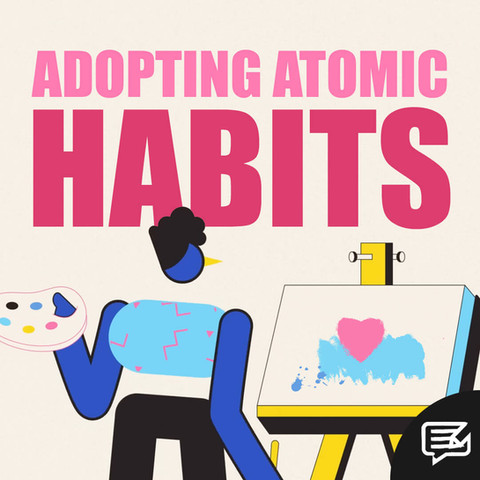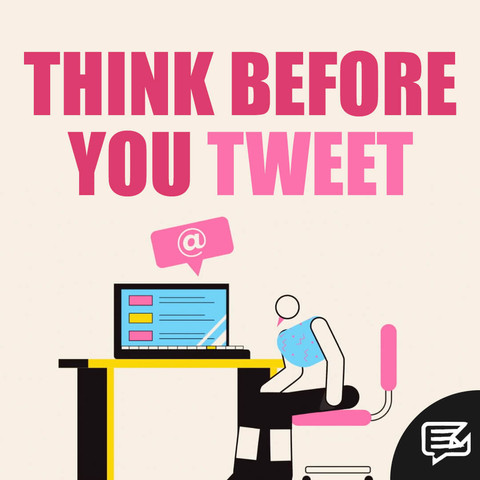
22.03.22
THINKING DIFFERENTLY ABOUT "WHY"
When it comes to asking questions, you’ll be familiar with the Five Ws: who, what, when, where and why. These five interrogative words have inherent value. They cannot be answered with a simple “yes” or “no”, resulting in our frequent usage of them from a very young age.
Much like poor Peggy Schulyer in Lin-Manuel Miranda’s Hamilton, “How” gets an occasional look-in too (who, what, when, where, why… and how), but from author Simon Sinek’s perspective, no question is more important than “Why?”
In his 2009 bestselling business book, Start with Why, Sinek argues the case that the “why” should drive every decision a leader or organisation makes and every message it sends out. Why? You might ask. Well, let’s find out…



We’ve all heard of the Wright brothers and their famous flying machine. But like me, you’re probably less familiar with Samuel Pierpont Langley. At the turn of the 20th century, Langley seemingly had all the ingredients for success in his mission to build the world’s first aeroplane. Money was no object, he had access to the finest materials and he assembled a team made up of some of the best and brightest minds of the day.
Orville and Wilbur Wright, on the other hand, were trying to accomplish the same feat with a ragtag team of amateurs from the local area. They were reliant on the profits from their bicycle shop to fund the endeavour. So how did the Wright brothers manage to succeed where the much better qualified, better funded Langley failed?
According to Sinek, it was because they had a clearer sense of “why”:
"Langley had a bold goal, but he didn’t have a clear sense of WHY. His purpose for wanting to build the plane was defined in terms of WHAT he was doing and WHAT he could get. He had had a passion for aeronautics since a very young age, but he did not have a cause to champion. More than anything else, Langley wanted to be first. He wanted to be rich and he wanted to be famous…."
He continues:
"Unlike Langley, the Wright brothers did not have the recipe for success. Worse, they seemed to have the recipe for failure…. What the Wright brothers were doing wasn't any different from Langley or all the others trying to build a flying machine. But the Wright brothers did have something very special. They had a dream. They knew WHY it was important to build this thing. They believed that if they could figure out this flying machine, it would change the world. They imagined the benefits to everyone else if they were successful…. Orville and Wilbur preached what they believed and inspired others in the community to join them in their cause."
When I think about how I get through a tough day at work I can easily recognise the point Sinek is making here. Particularly when the going gets tough, we all need to feel that we’re working towards a greater purpose to stay motivated and focused. It’s like the famous anecdote about the NASA cleaner explaining to John F. Kennedy why he was working late: “Mr President, I’m helping to put a man on the moon.”
Like me, Sinek is big fan of Apple. And why wouldn’t you be? After turning the computer industry on its head, Apple managed to repeat the pattern again and again - in music, mobile phones, small electronics and then the wider entertainment industry. How do they do it?
My days of queuing up outside the Apple Store for the latest gadget may now be long gone, but the pragmatist in me has often wondered why I get so much more excited for a new Apple launch than I would for, say, a Samsung? I mean, sure, they’re so beautifully designed that even the packaging feels like a work of art, but there must be more to it than that? They’re not the best value and Apple aren’t at the forefront of innovation – others invented smartphones, mp3 players and tablets before Steve Jobs got in on the action.
Back in the early 2000s Dell tried to branch out into the small electronics market with a personal digital assistant. It was a great bit of technology but never caught on in a big way. Dell retired it in 2007 – the same year that Steve Jobs changed the world with the launch of the iPhone. In cities around the world people famously lined the streets to be among the first to get their hands on one. On the face of it, the technology and even the design of the first iPhone wasn’t all that different to the failed Dell Axim.
Similarly, it was Creative Technology Ltd who invented a multigigabyte portable hard disc music player almost two years before Apple launched the iPod. Yet it was Apple’s product which transformed the way we consume music.
So why did Apple succeed where Dell and Creative failed? Sinek has a simple answer. At the heart of Start with Why is a concept he calls “The Golden Circle”. Sinek argues that leaders and organisations who inspire – whether they’re Apple, Martin Luther King Jr or the Wright Brothers – think, act, and communicate in the exact opposite way to the rest of us. Most of us will start by talking clearly about “what” we do, then sometimes “how”, but rarely “why”.
Sinek’s Golden Circle instead puts “why” at the centre. Those who inspire start with “why” only then moving out to “how” then finally “what”. Sinek writes:
"Apple's ability to do what they do has nothing to do with industry expertise. All computer and technology companies have open access to talent and resources and are just as qualified to produce all the products Apple does. It has to do with a purpose, cause or belief that started many years ago with a couple of idealists in Cupertino, California. "I want to put a ding in the universe," as Steve Jobs put it. And that's exactly what Apple does in the industries in which it competes. Apple is born out of its founders' WHY."
One of the big conclusions drawn in Start with Why is that “people don’t buy what you do, they buy why you do it.” Looked at in this way, I feel a bit less bad about splashing out on the latest bit of Apple kit when I could have got a similar product for less if only I was prepared to forego that shiny fruit-based logo on it.
Apple’s famous “think different” slogan was more than just a very clever marketing campaign. It gets to the core of what Apple is all about – their “why”. Sinek believes that it is for that reason that when Apple announces it is branching out into a new sector we’re already excited to see what they will do. Whereas when Dell tries something new, our first thought is – why don’t they just stick to computers?
The Golden Circle concept is backed up by biology, Sinek writes:
"If you look at a cross section of the human brain, from the top down, you see that the levels of The Golden Circle correspond precisely with the three major levels of the brain. The newest area of the brain, our Homosapien brain, is the neocortex, which corresponds with the WHAT level. The neocortex is responsible for rational and analytical thought and language. The middle two sections comprise the limbic brain. The limbic brain is responsible for all of our feelings, such as trust and loyalty. It is also responsible for all human behaviour and all our decision-making, but it has no capacity for language."
So, when people “start with why” they’re taking a short-cut directly to the part of our brain which makes decisions. And if, like the Wright brothers or Steve Jobs, your “why” is a compelling and consistent one, success is bound to follow.
What I like about Start with Why is that there’s a useful lesson in here for any of us – not just the once-in-a-generation geniuses. If we’re clear on our “why” then this will help us to make better decisions.
After all, if Back to the Future’s Doc Brown had given some more thought to “why” he’d decided to made a time machine out of a DeLorean then he’d probably have avoided a lot of time-travelling trouble. Thankfully for us fans of the 1985 classic, Doc clearly hadn’t read Sinek’s book…
The Five Ws may all be important, but next time I’m making a big decision or starting on a new project, I’ll definitely be putting “why” at the top of my list.

























































